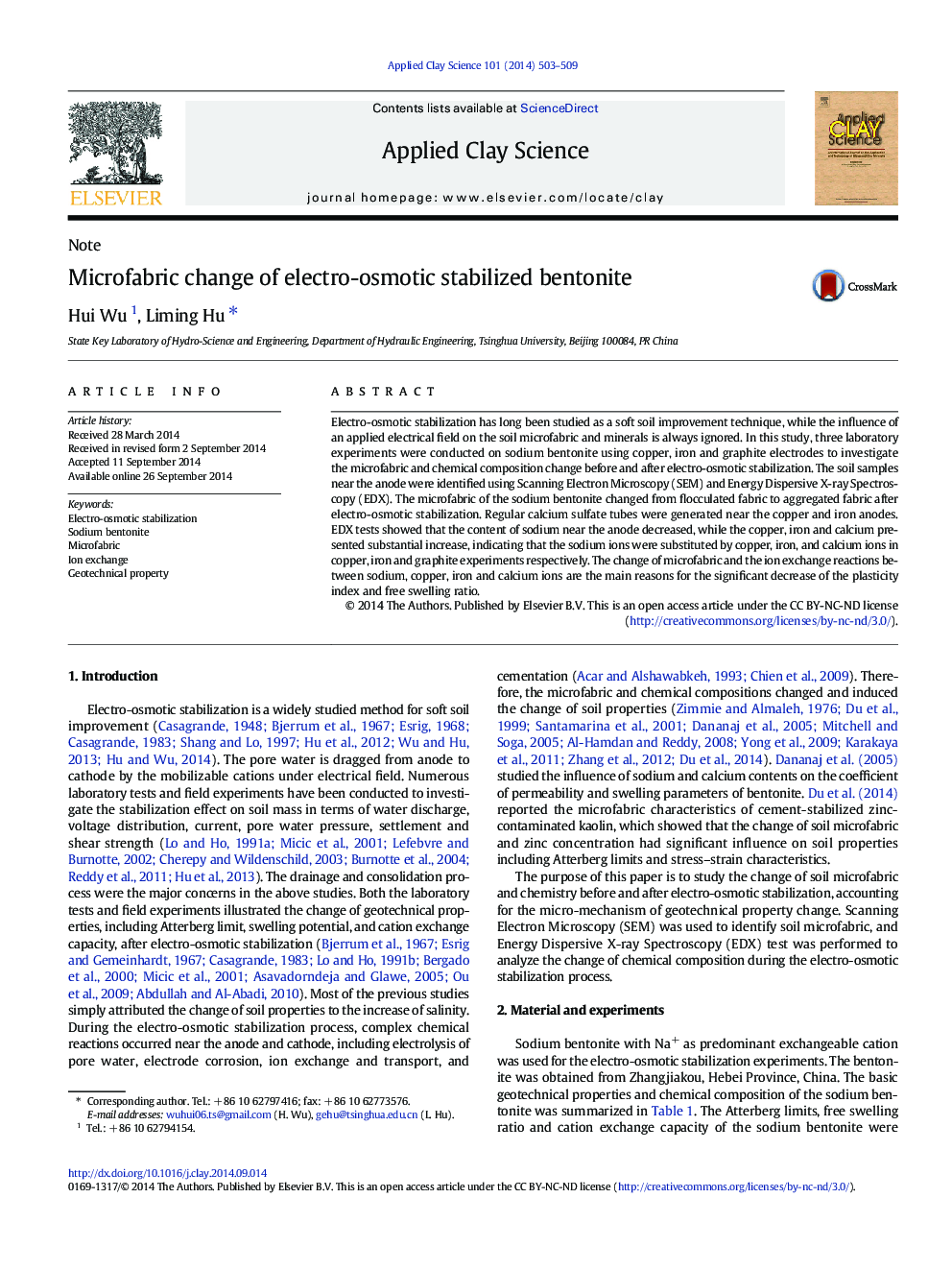| Article ID | Journal | Published Year | Pages | File Type |
|---|---|---|---|---|
| 8047027 | Applied Clay Science | 2014 | 7 Pages |
Abstract
Electro-osmotic stabilization has long been studied as a soft soil improvement technique, while the influence of an applied electrical field on the soil microfabric and minerals is always ignored. In this study, three laboratory experiments were conducted on sodium bentonite using copper, iron and graphite electrodes to investigate the microfabric and chemical composition change before and after electro-osmotic stabilization. The soil samples near the anode were identified using Scanning Electron Microscopy (SEM) and Energy Dispersive X-ray Spectroscopy (EDX). The microfabric of the sodium bentonite changed from flocculated fabric to aggregated fabric after electro-osmotic stabilization. Regular calcium sulfate tubes were generated near the copper and iron anodes. EDX tests showed that the content of sodium near the anode decreased, while the copper, iron and calcium presented substantial increase, indicating that the sodium ions were substituted by copper, iron, and calcium ions in copper, iron and graphite experiments respectively. The change of microfabric and the ion exchange reactions between sodium, copper, iron and calcium ions are the main reasons for the significant decrease of the plasticity index and free swelling ratio.
Related Topics
Physical Sciences and Engineering
Earth and Planetary Sciences
Geochemistry and Petrology
Authors
Hui Wu, Liming Hu,
